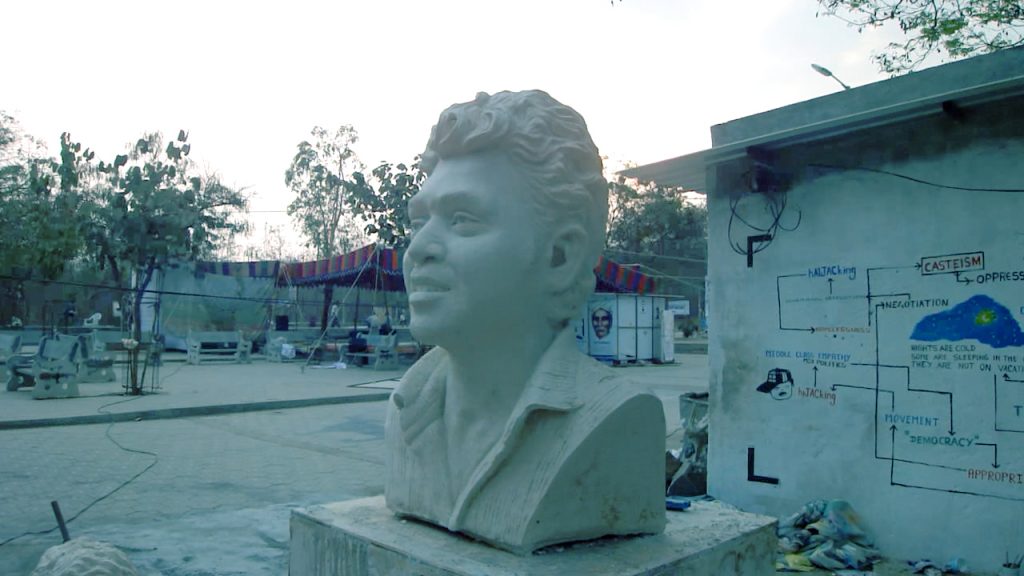A film on a suicide note, a shopping area and a few gazes…
The Unbearable Being of Lightness starts with visuals of an air plane taking off from Mumbai airport over the audio of Faiz Ahmed Faiz’s famous poem, Intesaab. The film then gradually unfurls to tell us a multi-layered story about Rohith Vemula, the Phd Dalit Scholar at the University of Hyderabad, who committed suicide on January 17, 2016. The film, or ‘the work’ as Ramchandra PN the filmmaker likes to call it, is an experimental documentary film, if one may call it that, which intentionally uses odd camera angles and some rather unusual juxtaposition techniques to create some extremely disturbing visuals, while simultaneously creating a multi-dimensional ‘work’.
It all began when Ramchandra was invited to conduct a film related workshop at University of Hyderabad. The original workshop was postponed due to Vermula’s death and the rescheduled workshop was held afresh months after Rohit’s death. By this time, Ramchandra felt he could no longer be indifferent to the happenings at the University of Hyderabad in between and had to react. The film starts with the onward journey of the film maker from Mumbai to Hyderabad and ends with his return to Mumbai; the visuals of this journey in the airplane and on road have been weaved in very intelligently with the main narrative of the film.
The central space of discussion in the film is the Shopcom area in the university campus where the students seem to spend a significant amount of their time. The workshop participants read out their ‘actuality reports’ from the visit to the Shopcom in footage from the workshop. The narratives in the ‘actuality reports’ give us the point of view of the posters, protest meetings and the stupa in memory of Rohit Vemula at Shopcom.We get to see Kabir Kala Manch, the Hirawal group and other student groups performing protest songs in the Shopcom area. The visuals of the different locations in the campus and in particular, the protest symbols all around give us a glimpse of Rohith’s life and the disturbed student life in the University campus following his death.
The film moves back and forth between footage of Ramchandra’s workshop, the visuals of the Shopcom area and around the the University campus, Rohit’s suicide letter being read out by an actor whose face is juxtaposed against the sights of a Mangalore mall, and a narrator reading Sudipto Mondal’s article on Rohit Vemula’s family in the Hindustan Times. The visual of the actor reading Rohit’s letter set in a mall is intended to create discomfort in the viewer while highlighting society’s indifference and ignorance in cases such as Vemula’s. Through these juxtapositions, Ramchandra’s conscious effort to experiment with the visual form adds a very interesting hue and layering to his work.
The questions raised by Ramchandra are bound to leave the viewer with very conflicting thoughts about the caste system and the various ways it manifests in primary educational institutions in our country and that is the biggest success of this thought-provoking work.
Documentary, Color


